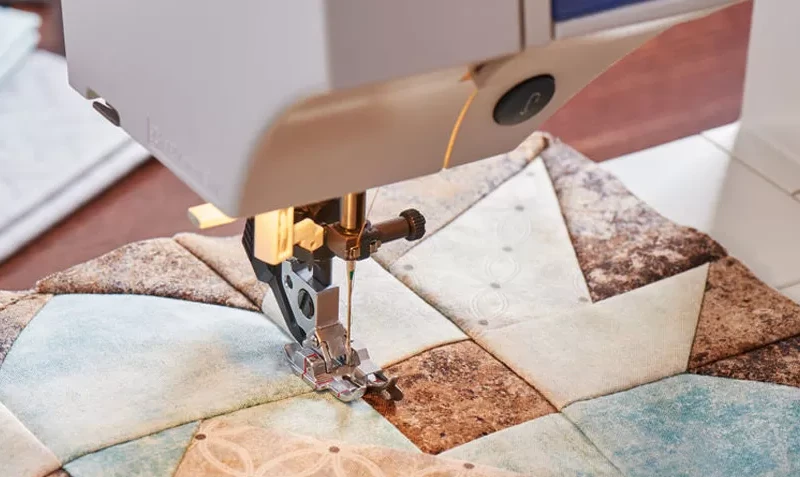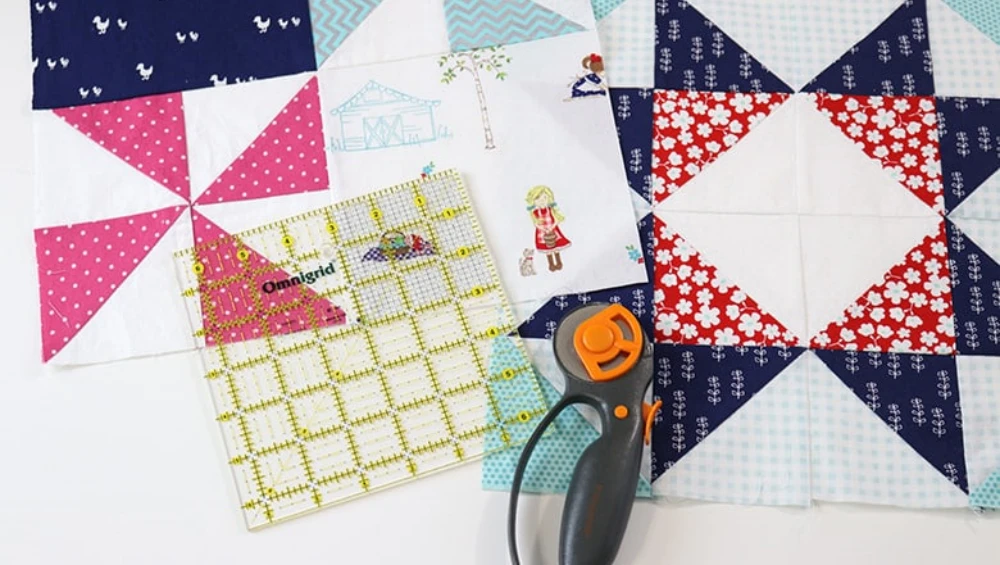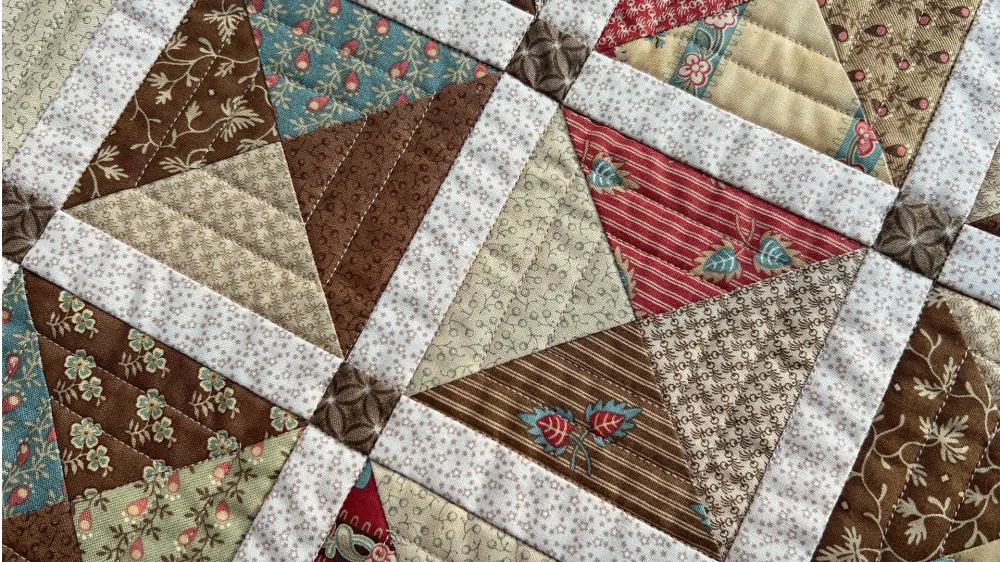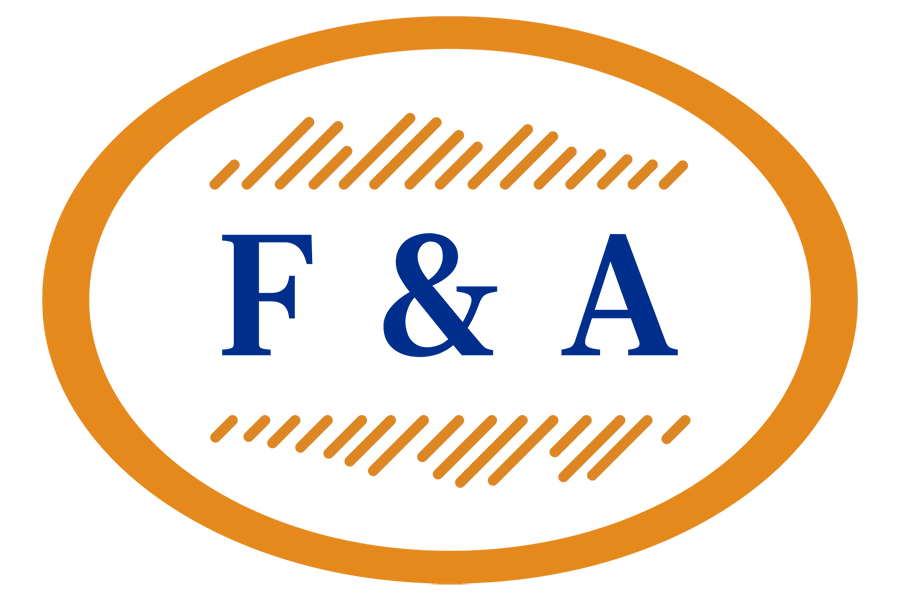Welcome to the world of patchwork quilt making! You might feel a bit overwhelmed at first, but quilting is for everyone. With so many free patterns out there, did you know that allpeoplequilt.com alone lists over 35 free patchwork quilt designs just for beginners? You can grab your favorite fabrics and dive right in.
Fanda Fabrics has everything you need, from bright prints to cozy bundles, so you can start stitching your patchwork quilt today. Making your first quilt feels exciting, and these beginner quilt patterns help you learn step by step.
Key Takeaways
Start quilting with simple projects like baby or lap quilts to build skills quickly and enjoy the process.
Use 100% cotton fabric and consider precut bundles to save time and make fabric selection easier.
Gather basic tools such as a rotary cutter, cutting mat, quilting ruler, and sewing machine for smooth sewing.
Choose beginner-friendly quilt patterns with simple shapes like squares, strips, or bricks to gain confidence.
Take advantage of free tutorials, video guides, and downloadable instructions to learn step-by-step and fix mistakes easily.
Quilting Tips for Beginners

Must-Know Techniques
Starting your quilting journey feels exciting, but you might wonder where to begin. Here are some must-know techniques that make beginner quilt patterns much easier to tackle:
Choose the right thread before you start. A good thread helps your patchwork quilt last longer.
Try quilting “in the ditch.” Stitch along the seams of your blocks to keep everything strong and neat.
Baste your quilt sandwich well. Many beginners like spray basting because it holds layers together.
Begin with small projects, like a baby quilt or a lap quilt. These are easy to sew and help you learn quickly.
Plan your quilt blocks and colors. Use graph paper or a digital tool to sketch your ideas.
Use budget-friendly fabrics at first. This way, you can practice without worrying about mistakes.
Add a label to your quilt. It’s a fun way to personalize your finished project.
Tip: Fanda Fabrics’ Quilting Fabric Bundles give you a variety of colors and patterns, making it simple to try out different beginner quilt patterns without the stress of picking each fabric yourself.
Fabric Selection Basics
Picking fabric is one of the most creative parts of quilting. You want your patchwork quilt to look great and feel soft. Start with 100% cotton, which is easy to cut and sew.
Precut bundles, like those in the Fanda Fabrics Quilting Collection, save you time and help your blocks match up. Try mixing solids and prints for a balanced look. If you’re unsure, choose a color theme or let a bundle inspire you.
Cutting and Piecing Tips
Cutting and piecing are key steps in every quilt. Always use a sharp rotary cutter and a sturdy ruler. Lay your fabric on a self-healing mat for safety. Double-check your measurements before you cut.
When piecing, sew with a consistent seam allowance—usually 1/4 inch. Press your seams flat as you go for crisp, even blocks. If you make a mistake, don’t worry! A seam ripper helps you fix it fast.
Here’s a quick look at the average cost to get started with quilting:
Quilting Supply | Average Cost (USD) | Notes |
|---|---|---|
Sewing Machine | $130 | Basic beginner model |
Rotary Cutter | $18 | Olfa or Fiskars brand |
Rotary Cutting Mat | $60 | 24″ x 36″ self-healing |
Fabric (Cotton) | $45 | About 5 yards for a throw-size quilt |
$10 | Pre-packaged for throw-size | |
Thread | $4 | Small spool |
Other Supplies | $95 | Ruler, scissors, iron, pins, etc. |
Total | $362 | Most tools are one-time purchases |
Note: Once you have your tools, making more quilts gets much cheaper—just buy fabric and batting for your next patchwork quilt!
Essential Quilting Supplies

Tools for Beginners
You want to start your patchwork quilt with the right tools. The basics make your sewing smoother and your results neater. Here’s what you need:
Rotary Cutter: Choose a 45 mm rotary cutter from brands like Olfa or Fiskars. It helps you cut straight lines quickly.
Cutting Mat: Get a self-healing mat, at least 18 x 24 inches. It protects your table and keeps your cuts accurate.
Quilting Ruler: A 6.5 x 24-inch acrylic ruler works for most projects. It helps you measure and cut fabric pieces.
Sewing Machine: Any machine that sews straight lines will do. You don’t need fancy features to make a patchwork quilt.
Quilting Needles: Size 90/14 needles work well for cotton fabrics.
Thread: Aurifil 50-weight cotton thread is a favorite among quilters.
Pins and Clips: Magic Pins or Wonder Clips hold your pieces together while you sew.
Seam Ripper: Mistakes happen! A seam ripper lets you fix them easily.
Iron: Press your seams flat for crisp blocks.
Optional tools like specialty rulers, small scissors, and Fanda Fabrics’ Bright Quilt Fabric or Batik Patchwork Fabric add variety and style to your projects. Double-sided quilted Fabric is great for reversible quilts and quick crafts.
Tip: Organize your tools in a basket or drawer so you can find everything fast when inspiration strikes.
Precut Fabrics and Bundles
Precut fabric bundles make quilting easier for beginners. You save time because you don’t need to cut fabric from yardage. The bundles come in coordinated colors and patterns, so your patchwork quilt looks polished without the stress of matching prints.
Fanda Fabrics offers bundles in fat quarters, charm packs, and jelly rolls. These precuts fit many beginner patterns and let you start sewing right away.
Precuts give you a variety of prints from one collection.
You skip most pressing and cutting steps, which speeds up your sewing.
Many patterns use precut sizes, so you can follow tutorials with confidence.
You can mix precuts with scraps for a creative, scrappy look.
If you want instant gratification and less prep work, precut bundles are your best friend. They help you focus on the fun part—piecing your patchwork quilt and watching your design come together.
20 Free Quilt Patterns for Beginners

Ready to pick your first patchwork quilt project? You’ll find plenty of free quilt patterns online, but it helps to know which ones work best for beginners. Here’s a list of 20 beginner quilt patterns, each with a short description, finished size, and a link to a free tutorial.
You can use Fanda Fabrics’ quilting bundles or collections for easy fabric selection and a polished look. Let’s dive in!
Strips of Solids Throw
This pattern uses strips of solid fabrics to create a modern, bold look. You sew long strips together, then trim and bind. The finished size is usually 50″ x 60″. You’ll find a free tutorial at allpeoplequilt.com. Try Fanda Fabrics’ Bright Quilt Fabric for vibrant results.
Make the Connection Quilt
Make the Connection Quilt features simple squares and rectangles, joined in a grid. You’ll learn basic piecing and block construction. The finished quilt measures about 48″ x 60″. Check out the free tutorial at Suzy Quilts. Precut bundles from Fanda Fabrics make color matching easy.
Big Block Style Quilt
Big Block Style Quilts use large blocks, often over 12″ x 12″. You sew fewer pieces, which means less cutting and faster assembly. Many patterns use just one block type, like squares or half-square triangles.
You’ll find clear diagrams and instructions for different sizes. Precut charm packs or layer cakes from Fanda Fabrics simplify the process. Finished size varies, but a throw is usually 54″ x 72″. Try the free Sew Day pattern by Amy Gibson for step-by-step guidance.
Large blocks mean fewer seams and less complexity.
Simple shapes like squares and HSTs make piecing easy.
Patterns often include multiple size options.
Fat Quarter Triangle Quilt
You’ll love the Fat Quarter Triangle Quilt if you want to practice half-square triangles. You need 8 fat quarters plus background fabric for a throw-size quilt. The finished size is about 56″ x 70″. The Triangle Jitters Quilt tutorial at Suzy Quilts walks you through each step. Fanda Fabrics’ fat quarter bundles are perfect for this project.
Large Hexagon Quilt
Large Hexagon Quilts use big hexagon shapes for a modern twist. You cut hexagons from fabric, arrange them in rows, and sew them together. The finished quilt is usually 60″ x 72″. You’ll find a free tutorial at Red Pepper Quilts. Fanda Fabrics’ Quilting Collection offers plenty of prints for a playful look.
Color-Blocked Charm Square Baby Quilt
This baby quilt uses charm squares (5″ x 5″) in color blocks. You arrange squares by color, sew them in rows, and add a border. The finished size is 36″ x 42″. Find a free tutorial at Moda Fabrics. Charm packs from Fanda Fabrics make this beginner quilt pattern quick and easy.
Scrappy Strips Quilt
Scrappy Strips Quilts let you use leftover fabric strips for a fun, patchwork quilt look. You sew strips together, then cut and rearrange for a unique design. The finished size is flexible, often 48″ x 60″.
Try the free tutorial at Diary of a Quilter. Fanda Fabrics’ bundles give you plenty of variety.
Soft N Snuggly Baby Quilt
You want a baby quilt that’s soft and durable. Choose wool for warmth, double gauze for lightweight comfort, or quilting cotton for breathability. Flannel batting adds extra softness.
The finished quilt is usually 36″ x 42″. Find a free tutorial at Robert Kaufman Fabrics. Fanda Fabrics’ cotton and flannel options work well for this cozy project.
Wool offers durability and warmth.
Double gauze is lightweight and soft.
Quilting cotton is breathable and long-lasting.
Flannel batting creates a lightweight, easy-to-carry quilt.
Snuggly Bricks Quilt
Snuggly Bricks Quilt uses rectangular “brick” pieces for a simple, modern design. You sew bricks in rows, then add a border. The finished size is 40″ x 50″. Find a free tutorial at allpeoplequilt.com.
His & Hers Baby Quilts
You can personalize baby quilts with color and design. Her quilts often use pinks, florals, and pastel shades. His quilts feature blues, navy, grey, olive, or muted rainbow colors.
Geometric patterns like half-square triangles or animal themes work well for boys. Backings differ too—pink fleece for girls, blue Minky or fleece for boys. The finished size is usually 36″ x 42″. Find a free tutorial at Simply Handmade.
Hers: pinks, florals, pastel colors.
His: blues, navy, grey, olive, geometric or animal themes.
Backings: pink fleece for girls, blue Minky for boys.
Snuggly Layer Cake Throw
This throw quilt uses one layer cake (42 precut 10″ squares). You arrange squares, sew them in rows, and add a border. The finished size after washing is 42″ x 57″. Find a free tutorial at Fat Quarter Shop.
Giant Star Baby Quilt
You’ll create a bold star design using fat quarters. Choose 8 for repeats or 16 for more variety. Spray starch before cutting to stabilize fabric. Cut squares, make half-square triangles, and lay out blocks in a starflower petal design.
Sew blocks into rows, press seams, and assemble the quilt. The finished size is 40″ x 40″. Find a free tutorial at Diary of a Quilter.
Pick your fabrics and color scheme.
Use spray starch before cutting.
Cut squares and make HSTs.
Trim and lay out blocks.
Sew rows and press seams.
Prepare the backing and baste.
Quilt and trim.
Turnstile Baby Quilt
Turnstile Baby Quilt features pinwheel blocks for a playful look. You sew half-square triangles, arrange them in a turnstile pattern, and add a border. The finished size is 36″ x 42″. Find a free tutorial at Moda Bake Shop. Fanda Fabrics’ charm packs and fat quarters work well for this pattern.
Sawtooth Star Baby Quilt
The Sawtooth Star block is a classic design with a central square and eight triangles forming a star. This pattern dates back to just after the Civil War and remains popular for its timeless appeal.
The finished quilt is usually 36″ x 36″. Find a free tutorial at Diary of a Quilter. Fanda Fabrics’ solid and print bundles help you create a striking star.
The Sawtooth Star Baby Quilt stands out for its historical significance. It represents generations of craftsmanship and artistry, making it a favorite among quilters.
Gathered Precuts Quilt
Gathered Precuts Quilt uses precut fabric pieces like charm packs or jelly rolls. You sew pieces together in rows or blocks, then add a border. The finished size is flexible, often 48″ x 60″. Find a free tutorial at allpeoplequilt.com. Fanda Fabrics’ precut bundles make this beginner quilt pattern easy to start.
Simple Chevron Throw
Simple Chevron Throw features zigzag stripes for a modern look. You chain in multiples of 21 until you reach your desired width, usually 50″. Add an extra multiple to account for shrinkage. Measure after the first row to check the width. Find a free tutorial at Make & Do Crew.
Decide on blanket width.
Chain in multiples of 21.
Add extra chains for shrinkage.
Measure after the first row.
Strip & Flip Quilt
Strip & Flip Quilt uses the Quilt-As-You-Go method with strip piecing. You sew strips directly onto a backing and batting sandwich, flipping each strip as you go. This combines piecing and quilting in one step. The finished size is usually 40″ x 50″. Find a free tutorial at Cluck Cluck Sew.
Sew and flip strips for efficient quilting.
Use a walking foot and vary strip widths.
Press as you go and square up sections.
Weekend Flannel Squares Quilt
Weekend Flannel Squares Quilt uses flannel squares for a cozy, warm finish. Flannel backing grips well and can replace batting, making the quilt softer and more affordable. Prewash flannel to prevent shrinkage. The finished size is 45″ x 60″. Find a free tutorial at Diary of a Quilter.
Flannel backing grips and prevents slipping.
Flannel can replace batting for warmth.
Prewash flannel to reduce lint and shrinkage.
Simple Sixteen Patch Quilt
Simple Sixteen Patch Quilt uses blocks made from sixteen squares, each 3½” x 3½” (unfinished). The typical finished block size is 12″ x 12″, but you can adjust to 8″, 12″, or 16″. The finished quilt size depends on the number of blocks. Find a free tutorial at Moda Bake Shop.
Sixteen squares per block.
Finished block sizes: 8″, 12″, or 16″.
Customize by changing the patch size.
Plus Quilt
Plus Quilt features plus-shaped blocks in a grid. Popular color combinations include triadic (three colors plus a neutral), analogous (three adjacent colors plus a neutral), monochromatic, complementary, and warm/cool schemes. These combinations help you select fabrics quickly and confidently.
The finished size is usually 54″ x 72″. Find a free tutorial at For the Love of George. Fanda Fabrics’ bundles offer plenty of color options for this beginner quilt pattern.
Tip: You’ll find even more free quilt patterns and tutorials at Fanda Fabrics’ website. Their quilting bundles and collections make fabric selection easy, so you can focus on sewing and enjoying your patchwork quilt.
Tutorials and Resources
Downloadable Instructions
You want to jump right into quilting, but sometimes you need clear steps you can follow at your own pace. That’s where downloadable instructions come in handy. Many websites offer free PDF guides for beginner quilt patterns. You can print these out or keep them on your tablet while you sew.
Fanda Fabrics’ website features a growing library of free quilt tutorials and pattern downloads. These instructions break down each step, so you never feel lost. If you like to check off steps as you go, downloadable instructions make your quilting journey smoother.
Video Guides
Sometimes you just want to see how it’s done. Video guides help you learn new techniques by watching someone else do it first. You can pause, rewind, and replay as many times as you need. Many free video tutorials walk you through everything from cutting fabric to binding your finished quilt.
Fanda Fabrics often shares links to helpful video guides on their site, so you can find inspiration and answers in one place. Watching a real person sew makes even tricky steps feel doable.
Tip: Try searching for “beginner quilt tutorials” on YouTube or visit Fanda Fabrics’ resources page for curated video picks.
Block of the Month Series
If you want to build your skills over time, a Block of the Month series is perfect. Each month, you get a new block pattern with step-by-step tutorials. By the end of the year, you’ll have a full quilt top and a ton of new skills. Many of these series are free and come with both written and video instructions.
Fanda Fabrics highlights popular Block of the Month programs and shares fabric inspiration for each block. You can join a community of quilters, share your progress, and ask questions along the way.
Note: For more free resources, quilt tutorials, and fabric ideas, check out Fanda Fabrics’ website. You’ll find everything you need to keep learning and growing as a quilter.
Troubleshooting for Beginners
Easiest Patterns
If you feel unsure about where to start, you’re not alone. Many new quilters want to know which patterns are the easiest. You can’t go wrong with simple squares, strips, or bricks. Patterns like the Simple Sixteen Patch or Strips of Solids Throw let you focus on learning the basics.
These easy quilt patterns help you practice straight seams and color placement without tricky shapes. When you use beginner quilt patterns, you build confidence and see results fast.
Tip: Precut bundles from Fanda Fabrics make these projects even easier. You get coordinated fabrics that work well together, so you can jump right into sewing.
Fabric Choices
Choosing fabric can feel overwhelming, but you can keep it simple. Start with 100% cotton for your patchwork quilt. Cotton is easy to cut, sew, and press. Precut bundles or charm packs save you time and help your blocks match up.
If you want a bold look, try bright prints or batik patchwork fabric. For a softer vibe, go with pastels or solids. Fanda Fabrics’ Quilting Collection offers a wide range of options, so you can find something that fits your style.
Common Mistakes
Everyone makes mistakes when learning something new. Here are some common issues you might face:
Wavy quilt edges after machine quilting. This often happens when the fabric feeds unevenly. Pin your layers well to keep everything smooth.
Seems not lining up. Careful pinning and slow sewing help. Try nesting your seams or using glue basting for extra accuracy.
Thread breaking. Double-check your threading and use a good quality thread, like 40 wt. or 50 wt. cotton or poly blends.
Marking quilting lines after pinning. Mark your lines before you pin the quilt sandwich to avoid trouble.
Unsure about stitching in the ditch? You can quilt along seam lines vertically, horizontally, or both. It’s your choice!
If you get stuck, check out the FAQs on Fanda Fabrics’ website or reach out to their support team. You’ll find answers and friendly advice.
Finishing Tips
Finishing your patchwork quilt feels amazing! Trim your edges straight before adding the binding. Use a walking foot for smooth, even stitches. Press your quilt well to set the seams.
Add a label with your name and date—you’ll love looking back on your first quilt. If you want more help, Fanda Fabrics’ tutorials and support can guide you through the last steps.
Remember, every quilt teaches you something new. Enjoy the process and celebrate your progress!
Conclusion
You can start your first quilt with confidence. Grab a free pattern, pick your favorite fabrics, and just begin. Every quilt you make teaches you something new. Fanda Fabrics gives you the support you need with high-quality bundles and lots of free resources.
Explore more free tutorials and join quilting groups for inspiration. You will find that the quilting community loves to share free advice and encouragement. Your creative journey starts now!
FAQ
How do you choose the best fabric for a beginner’s quilt?
Start with 100% cotton. It’s easy to cut and sew. Precut bundles from Fanda Fabrics save you time and help your blocks match up. Pick colors you love and let your creativity lead the way.
What size quilt should you make first?
Try a baby quilt or a small throw. These sizes are easy to handle and finish quickly. You’ll learn the basics without feeling overwhelmed. Most beginners start with quilts around 36″ x 42″ or 50″ x 60″.
Can you quilt without a sewing machine?
Yes, you can! Hand quilting works for small projects. Use a needle, thread, and a thimble. It takes longer, but you get a cozy, handmade feel. Many beginners start with machine quilting for speed.
Where can you find free quilt patterns for beginners?
You’ll find free quilt patterns on sites like allpeoplequilt.com, Suzy Quilts, and Fanda Fabrics. Look for beginner-friendly designs with simple shapes. Download tutorials or watch video guides to help you get started.
What if your quilt blocks don’t line up?
Don’t worry! Use pins or clips to hold pieces together. Sew slowly and check your seam allowance. If blocks still don’t match, a seam ripper helps you fix mistakes. Practice makes perfect, so keep going!
